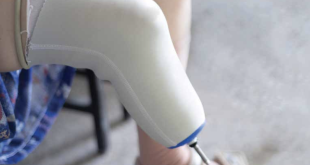If you are in your 30s, your odds of death are around one in 1,000 per year. If you are 90 years old, your odds of dying are one in six. Our risk of death doubles every eight years. What is the underlying biological process driving this exponential increase? The vastly greater risk of diseases, from cancer to dementia, is the reason 85-year-olds die more often than 35-year-olds. The incidence of diseases like arthritis, osteoporosis, hypertension, atherosclerosis, cardiovascular disease, cancer, cataracts, type 2 diabetes, and Alzheimer’s increases exponentially with age. The reason for increasing susceptibility to diseases lies in changes in our biology. If those changes could be understood, we could come up with treatments to slow their onset.
What can science do about these biological age-related changes? The good news is that now many ways to slow, or even reverse, the aging process are being discovered—from changing diet, to altering genes, to drugs that kill senescent cells. Trials of these regimens on mice show delay in death and diseases, and slowing of cognitive aging. What’s more, they have plumper skin and thick, glossy fur, thus looking much better than their untreated counterparts.
Such regimens slow the external signs of ageing, while at the same time repairing the cells. Wrinkles and grey hair are due to the same biological processes that makes one susceptible to cancer and heart problems. More than two dozen biotech start-ups are today working on removing aged, senescent cells from the body, one of the reasons for aging. However, aging is due to a collection of processes.
Here are some hallmarks of aging:
- Damage to DNA
DNA can be damaged or altered due to external influences like toxins and carcinogens from food, cigarette smoke, or chemicals. Other factors include UV in sunlight, radiation such as X-rays, or natural radioactivity. Chemical side-effects of normal metabolism also cause damage to our DNA. The worst consequence of accumulating mutations is cancer, with just one single affected cell having an unlimited ability to proliferate, resulting in a potentially deadly tumor. At the same time, changes to cells’ DNA not resulting in a tumor can also cause problems, becoming dysfunctional over time.
- Shortened telomeres
Telomeres, the protective cap on chromosomes, become shorter each time a cell copies itself, ultimately becoming too short to do their job and causing cells to age and stop functioning properly. Short telomeres are seen along with many diseases and dysfunctions related to aging. For instance, telomeres are connected to hair turning grey; melanocytes produce the melanin pigment responsible for coloring hair, and when telomeres of the hair follicular stem cells are shortened, there is no more melanin production, making hair revert to white. Damage to telomeres can signal the time for apoptosis (cell death) or senescence to cells.
- Senescent cells accumulation
Senescent cells secrete inflammatory molecules that alert the immune system to the presence of precancerous mutations, and the immune cells engulf the senescent cell and get rid of the problem. This is known as SASP (senescence associated secretory phenotype). However, while the immune cells may get rid of senescent cells, if the senescent cell survives and continues to secrete inflammatory chemicals, then the aging process is further accelerated.
- Failure of body signals
Due to changing biological conditions related to aging, the organs start working differently to recompense, with wide-ranging effects especially in the immune system. While the body’s first line of defense against infection and injury is inflammation, aging can result in development of a state of chronic inflammation that can fuel aging.
Now, knowing all this, what can be done to slow aging?
- Eat well
Being overweight accelerates the aging process. Accumulated visceral fat between the organs of our bodies release molecules that fuel chronic inflammation which accelerates aging. The best advice is to eat a mix of different foods, cutting down on very sugary, fatty, or processed food, and limiting alcohol intake. Some studies have shown that fruit and 100% fruit juice, dairy products, legumes, nuts, seaweed, and coffee are positively associated with telomere length (Physical Activity and
Nutrition: Two Promising Strategies for Telomere Maintenance? December 2019, National Institutes of Health, https://bit.ly/2XfdKuQ)
- Exercise
Exercise is the best way to fight aging. It increases telomere length, reduces the number of senescent cells in the muscle, and increases the number of stem cells that renew muscle, besides increasing other stem cells activity in the body. Exercise results in muscle with more and better mitochondria than sedentary muscle. Exercise could also lead to the rebuilding of aging collagen, thereby replacing stiff, glycated fibers with fresh ones. Exercise reduces inflammation, too, as static muscle promotes inflammation, and by burning fat, which secretes inflammatory molecules.
- Sleep well
Some studies have shown that when we sleep, our brains flush out the toxic amyloid that is implicated with Alzheimer’s disease. (How deep sleep may help the brain clear Alzheimer’s toxins, NPR, October 31, 2019, https://n.pr/3bdYart)
- Dental care is important
Oral bacteria that cause chronic gum disease and tooth decay may activate inflammatory molecules, and studies have shown the presence of bacteria responsible for gum disease in amyloid plaques, thus linking gum problems and Alzheimer’s disease. (Periodontal disease bacteria linked to Alzheimer’s disease, American Academy of Periodontology, January 8, 2019, )
Reference: Ageless: The New Science of Getting Older Without Getting Old by Andrew Steele
 Medicosnext
Medicosnext




